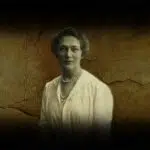Martin Scorsese was born on November 17, 1942. He is a filmmaker and author who makes deeply personal movies. Although a lot of his works are based on his experiences as an Italian American growing up in New York City, he has also produced acclaimed adaptations of great books. “Who’s That Knocking at my Door,” his directorial debut from 1967, was chosen for the Chicago Film Festival. He made history when he became one of the key figures of the New Hollywood movement in the 1970s and 1980s. His distinctive filmmaking techniques include profanity, super slow motion, freeze frames, camera movement, actor tracking, and graphic images of violence. We honor this historical figure and his accomplishments today.
Fast Facts
Full Name:
Martin Marcantonio Luciano Scorsese
Nickname:
Marty
Birth date:
November 17, 1942
Age:
82
Zodiac Sign:
Scorpio
Height:
5' 4.17"
Relationship Status:
Married
Net Worth:
$100 million
Background
Martin Scorsese was born on November 17, 1942, in Flushing, New York. He was the younger of Charles and Catherine Scorsese’s two sons, both of Sicilian ancestry. His mother was a seamstress, and his father was a clothes presser. Growing up with asthma prevented Scorsese from taking part in local activities, and he frequently found himself alone. While his healthy peers participated in sports and more social activities, he was entranced by movies, either watching them on television or going with his father to local theaters. Whatever thrills and excitement that Scorsese was unable to experience in reality, he found in films. He honed his knowledge of Hollywood films from the 1940s and 1950s at an early age. He enrolled in New York University’s Washington Square College, now known as the College of Arts and Science. He received the Best Student Picture award from The Producer’s Guild for his short film “It’s Not Just You, Murray!” in 1964, premiering in the New York Film Festival in 1966. He won prizes for other short films he produced while still a student.
When Scorsese first arrived in Hollywood in the early 1970s, he met producer and filmmaker Roger Corman, who requested him to helm a follow-up to his film “Bloody Mama.” Instead, Scorsese helmed Corman’s 1972 gangster movie “Boxcar Bertha,” which is comparable to Bonnie and Clyde. This film allowed him to familiarize himself with Hollywood, allowing him to improve his craft over the succeeding years. The next film in the filmmaker’s career was “Mean Streets,” a 1973 movie about a teenage Italian American attempting to survive in a challenging environment, cementing Scorsese’s style of machismo, violence, fast-paced action, and redemption. It was also in this decade when he started making documentaries such as “Italian American,” a 1974 study of his parents, and “American Boy,” a 1978 depiction of a friend fully entrenched in the 1960s drug culture. He took a detour from his regular film topics with “Alice Doesn’t Live Here Anymore,” a 1975 movie about a widowed mother trying to find herself in Arizona. After that, Scorsese released “Taxi Driver,” his debut blockbuster in 1976. The Cannes Film Festival gave “Taxi Driver” the International Grand Prize. In 1986, Scorsese released “The Color of Money,” starring Paul Newman to commercial success. It was one of his few high-budget films up to that point. His subsequent publication, 1988’s “The Last Temptation of Christ,” which explored a different understanding of Jesus’ acceptance of his mission on earth, angered certain religious organizations. With “Goodfellas,” a bloody account of the Mafia in New York City, Scorsese returned to more comfortable film territory. The film won Best Director Awards from the National Society of Film Critics, New York Film Critics, and Los Angeles Film Critics.
Over four decades, Scorsese has helmed 20 narrative features and documentaries. Since his first movie was released in 1968, he has also written a lot of screenplays. His experiences as a Catholic and Italian American informs his artistic expression. The director’s accomplishments can be ascribed to his great understanding of human nature and his capacity to use that insight to develop many of the most enduring characters in the movie business.
In 1965, Scorsese married Laraine Marie Brennan; the couple was married for six years. Their daughter, Catherine, was named after his mother. His second wife, Julia Cameron, was a writer, and Scorsese married her in 1976. They had a daughter, Domenica Cameron-Scorsese, who made an appearance in “The Age of Innocence.” Unfortunately, the union only lasted a year. Their bitter divorce inspired Cameron’s debut film, the dark comedy “God’s Will,” which also starred their daughter. Their daughter has continued to act, write, direct, and produce after that. Scorsese then wed actress Isabella Rossellini in 1979, a marriage that lasted four years. The fourth of Scorsese’s five marriages, with producer Barbara De Fina, ended in divorce in 1991. Following his fourth divorce, Scorsese had a relationship with actress Illeana Douglas from 1989 to 1997. Scorsese married Helen Schermerhorn Morris, his wife of more than 20 years, in 1999. Francesca, their daughter, is an actress and filmmaker who worked with her parents on “The Departed,” “Hugo,” and “The Aviator.”
Career timeline
He releases “The Big Shave,” his most well-known short film that condemns the U.S.A.’s involvement in Vietnam, and stars Peter Bernuth.
He is recognized for the movie, “Alice Doesn't Live Here Anymore.”
He directs “Raging Bull,” in which Robert De Niro plays the main character and wins a Golden Globe for Best Actor.
His movie "Hugo" is nominated for 11 Academy Awards and wins five of them, tying with "The Artist" by Michel Hazanavicius for the most Oscars won by a single movie in 2011.
Why We Love Martin Scorsese
He is an advocate for film preservation
He launched three nonprofit organizations: the Film Foundation in 1990, the World Cinema Foundation in 2007, and the African Film Heritage Project in 2017. He is an advocate for the preservation and development of films. To this day, he speaks out in support of art and cinema.
He is one of the greatest directors
He always puts his trust in those who not only share his values but also share his interests and concerns about working on projects that offer something fresh and original to the audience. Some of the most famous movies of our time were made with his assistance, and his work has influenced many others.
He is a pioneer in contemporary cinema
He revolutionized the production of movies and the telling of cinematic narratives. He was, and always will be, one of the "beards"—those early filmmakers who revolutionized the movie industry. To this day, filmmakers of the new generation always mention him as an inspiration.
5 Surprising Facts
He wanted to become a priest
Scorsese originally intended to become a priest as he went to a Catholic elementary school and joined a junior seminary, but he dropped out after a year.
He had anxiety over the number 11
Scorsese suffered from crippling anxiety related to the number 11 in the 1970s, steering clear of everything related to the number due to his strong superstition.
He played a part in his movie
An actor was meant to portray a distraught passenger anguished about killing his cheating wife in "Taxi Driver," but Scorsese stepped in to fill the role when the actor called in sick.
He received an offer from Spielberg
He declined Steven Spielberg's invitation to direct "Schindler's List" because he thought a Jewish director would be a better fit.
He has a few regrets in life
His two greatest regrets in life are never learning to cook and not reading more when he was younger.
Martin Scorsese FAQs
What is Martin Scorsese's most famous movie?
According to Rotten Tomatoes, his most famous movie is “My Voyage to Italy” from 1999.
How many Golden Globe Awards does Martin Scorsese have?
Scorsese has won 11 Golden Globe Awards.
What Michael Jackson music video did Martin Scorsese direct?
Scorsese directed the music video for Jackson’s “Bad.”
Martin Scorsese’s birthday dates
| Year | Date | Day |
|---|---|---|
| 2025 | November 17 | Monday |
| 2026 | November 17 | Tuesday |
| 2027 | November 17 | Wednesday |
| 2028 | November 17 | Friday |
| 2029 | November 17 | Saturday |

























